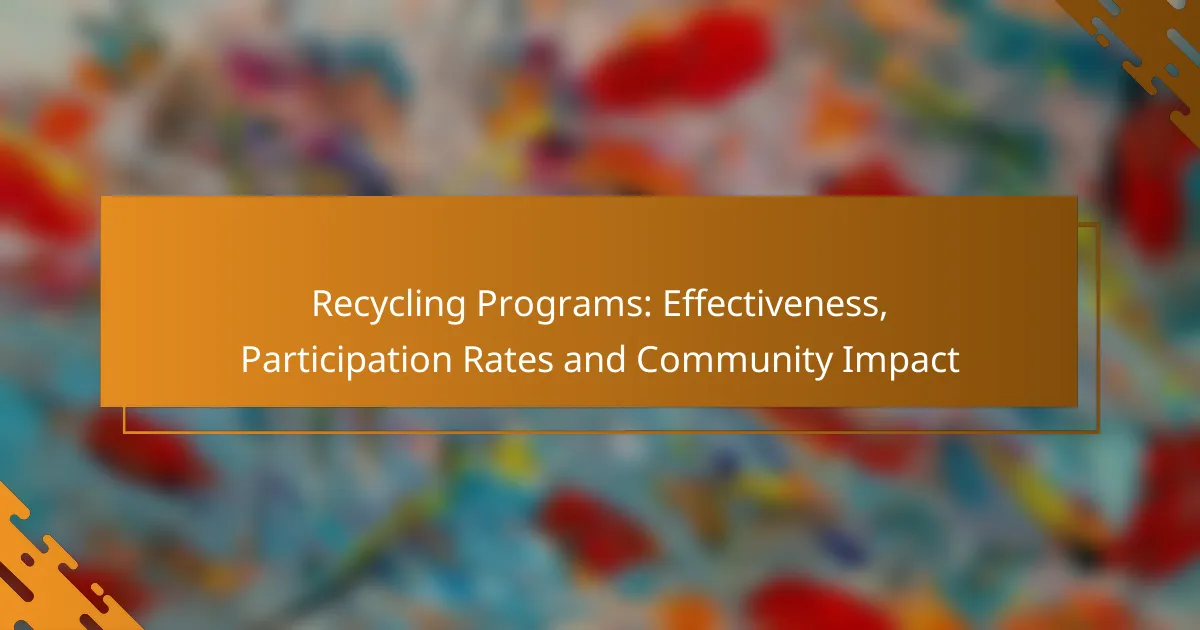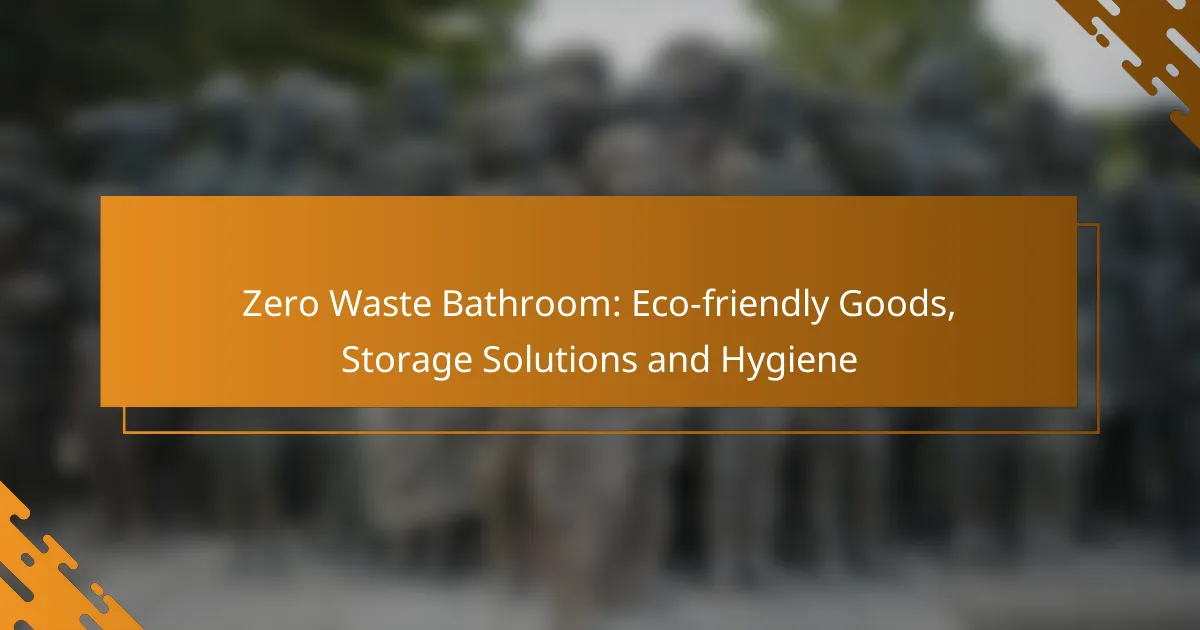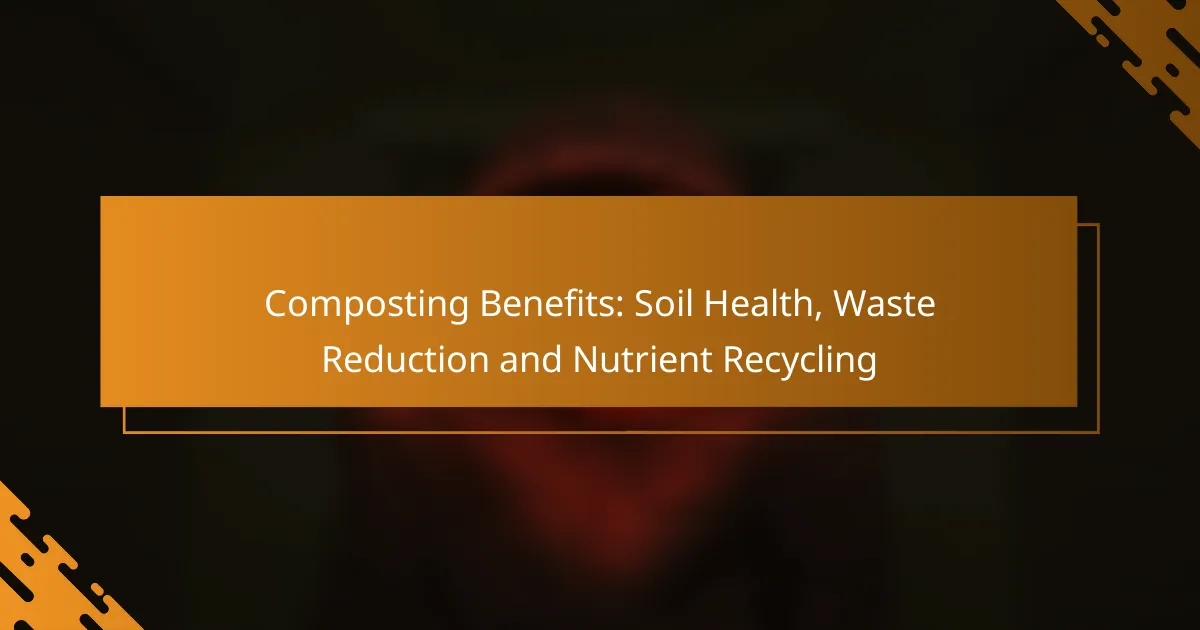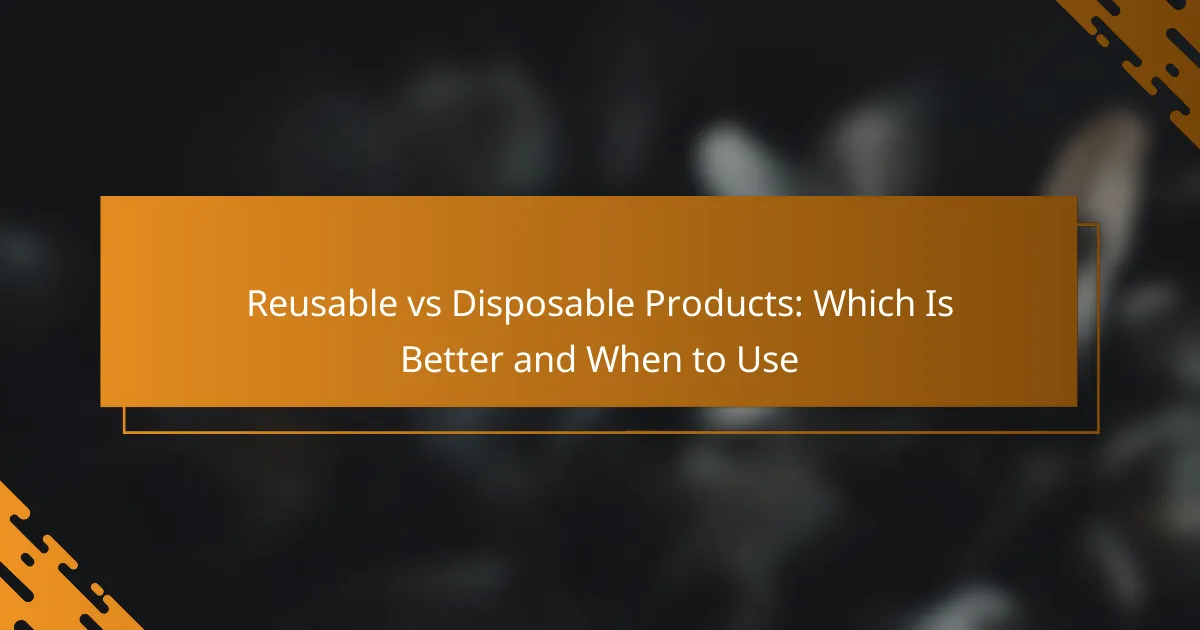Recycling programs play a crucial role in urban sustainability by effectively diverting waste and encouraging eco-friendly practices. Their success hinges on community participation, which can vary significantly based on factors like accessibility and public awareness. By fostering engagement in recycling efforts, these programs not only protect the environment but also promote economic growth and strengthen social ties within communities.

How effective are recycling programs in urban areas?
Recycling programs in urban areas are generally effective, achieving significant waste diversion and promoting sustainable practices. Their success largely depends on community participation, infrastructure, and educational initiatives.
High diversion rates in cities
Many urban recycling programs report diversion rates ranging from 30% to over 70%, depending on the city’s policies and public engagement. Effective programs often include curbside collection, drop-off centers, and comprehensive educational campaigns to inform residents about recyclable materials.
For instance, cities that implement single-stream recycling, where all recyclables are collected together, tend to see higher participation rates. However, this can lead to contamination, which may reduce overall recycling effectiveness.
Impact on landfill reduction
Recycling programs significantly contribute to landfill reduction by diverting materials that would otherwise occupy valuable space. Effective programs can reduce landfill waste by tens of thousands of tons annually, depending on the city’s population and waste generation rates.
Reducing landfill use not only conserves space but also decreases greenhouse gas emissions associated with waste decomposition. Cities that prioritize recycling often experience a lower environmental impact and enhanced community health.
Case study: San Francisco’s zero waste goal
San Francisco aims for a zero waste goal, targeting a diversion rate of 100% by 2030. The city has implemented comprehensive recycling and composting programs, which have achieved diversion rates above 80% in recent years.
Key strategies include mandatory recycling laws, extensive public outreach, and partnerships with local businesses. San Francisco’s approach serves as a model for other urban areas looking to enhance their recycling effectiveness and reduce landfill dependency.
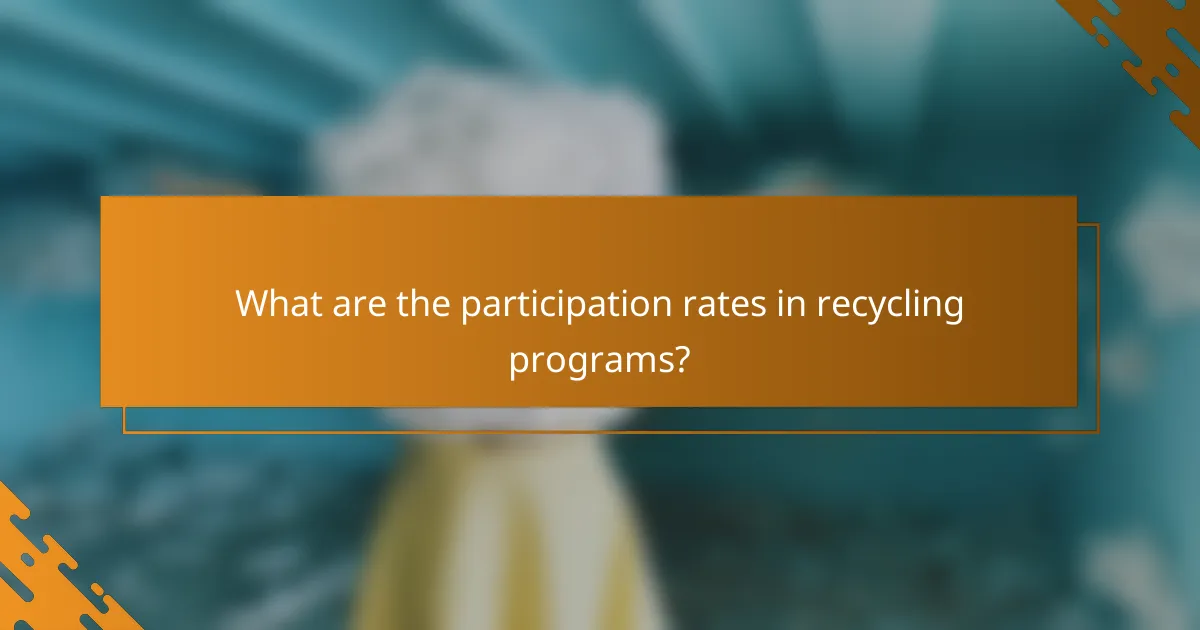
What are the participation rates in recycling programs?
Participation rates in recycling programs vary widely, typically ranging from around 30% to over 70% in different regions. These rates reflect how many residents actively engage in recycling efforts within their communities, influenced by various factors such as accessibility and public awareness.
National averages for participation
In the United States, national averages for recycling participation hover around 35% to 50%. Some states and cities report higher rates, especially those with robust educational campaigns and convenient recycling options. For example, cities like San Francisco boast participation rates exceeding 70% due to comprehensive recycling and composting programs.
Factors affecting participation in communities
Several factors influence recycling participation rates in communities. Accessibility to recycling bins, clarity of recycling guidelines, and the presence of incentives can significantly impact engagement. Communities with well-placed, clearly labeled bins tend to see higher participation rates.
Public education plays a crucial role as well. When residents understand the benefits of recycling and how to properly sort materials, they are more likely to participate. Additionally, community initiatives, such as local events or competitions, can boost interest and involvement in recycling efforts.
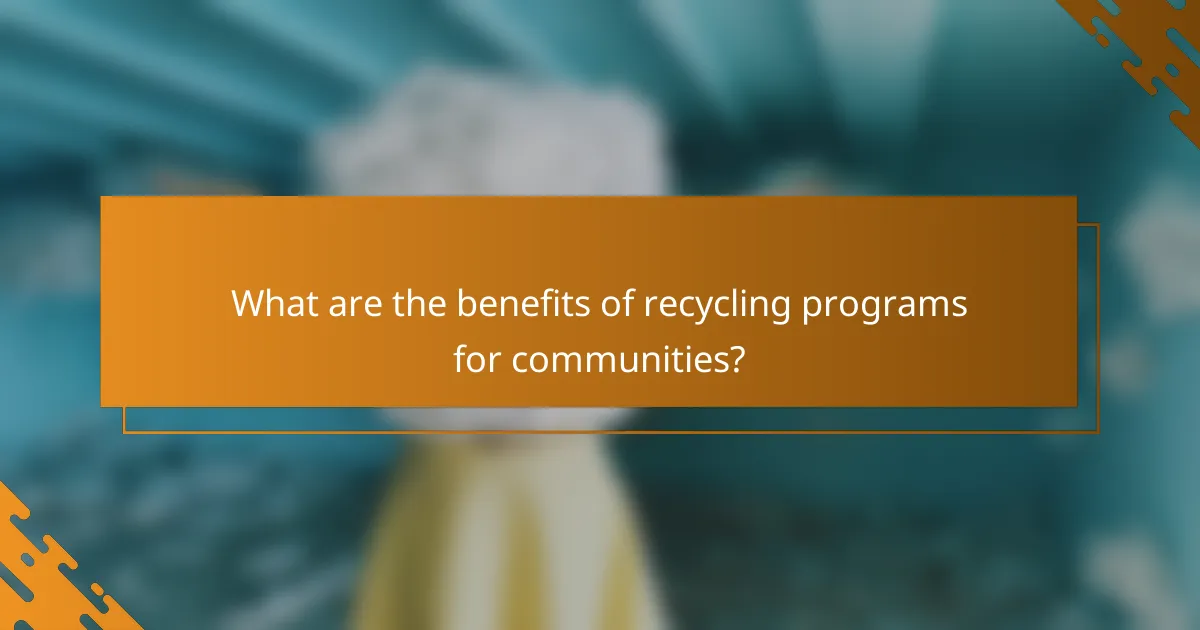
What are the benefits of recycling programs for communities?
Recycling programs offer numerous advantages for communities, including environmental protection, economic growth, and enhanced social cohesion. By promoting recycling, communities can reduce waste, conserve resources, and foster a sense of collective responsibility among residents.
Environmental benefits
Recycling programs significantly reduce the amount of waste sent to landfills, which helps decrease pollution and conserve natural resources. For instance, recycling paper can save trees and water, while recycling metals reduces the need for mining, which can be environmentally damaging.
Additionally, recycling lowers greenhouse gas emissions by minimizing the energy required to produce new products from raw materials. Communities that actively engage in recycling contribute to a healthier ecosystem and combat climate change effectively.
Economic benefits for local businesses
Recycling programs can stimulate local economies by creating jobs in waste management and recycling facilities. These programs often lead to cost savings for municipalities, which can be redirected to other community services. For example, cities that implement efficient recycling systems may experience lower waste disposal costs.
Local businesses can also benefit from recycling by reducing their waste disposal fees and potentially generating income from selling recyclable materials. This can enhance their sustainability practices and appeal to environmentally conscious consumers.
Social benefits and community engagement
Recycling programs foster community engagement by encouraging residents to participate in sustainable practices. Educational initiatives can raise awareness about the importance of recycling, leading to increased participation rates and a stronger sense of community responsibility.
Moreover, successful recycling initiatives can create opportunities for community events, such as clean-up days or recycling drives, which promote social interaction and collaboration among residents. This collective effort can strengthen community bonds and enhance overall quality of life.
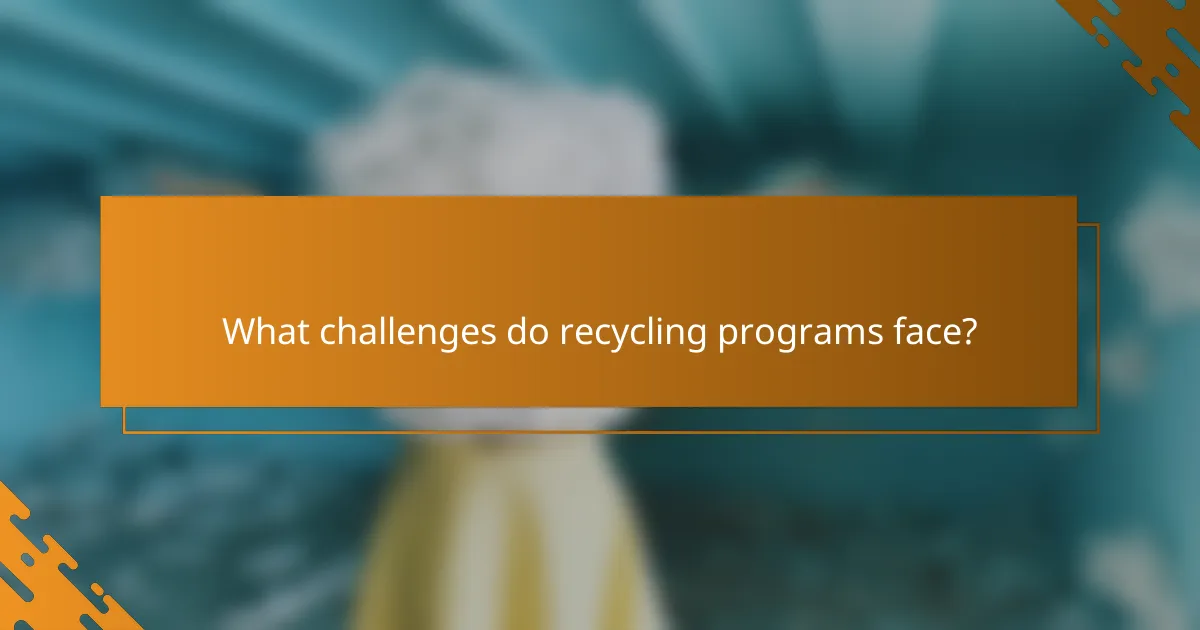
What challenges do recycling programs face?
Recycling programs encounter several significant challenges that hinder their effectiveness and community participation. Key issues include contamination of recyclable materials and a general lack of public awareness about proper recycling practices.
Contamination issues
Contamination occurs when non-recyclable items are mixed with recyclables, leading to entire batches being rejected. This can happen with common materials, such as food-soiled containers or plastic bags, which can disrupt the recycling process. Local recycling facilities often have strict contamination thresholds, and exceeding these can result in increased costs and reduced recycling rates.
To minimize contamination, communities should provide clear guidelines on what can and cannot be recycled. Simple visual aids, such as signage on bins, can help residents understand proper disposal methods. Regular educational campaigns can reinforce these messages and improve overall recycling quality.
Lack of public awareness
A significant barrier to effective recycling is the lack of public awareness regarding recycling rules and benefits. Many individuals are unsure about what materials are accepted in their local programs, leading to confusion and frustration. This lack of knowledge can result in lower participation rates and increased contamination.
To address this issue, municipalities can implement outreach programs that educate residents about recycling. Workshops, social media campaigns, and community events can effectively raise awareness. Providing easy-to-understand materials, such as brochures or online resources, can also empower residents to participate more actively in recycling initiatives.

How can communities improve recycling participation?
Communities can enhance recycling participation by implementing targeted strategies that engage residents and simplify the recycling process. Effective methods include educational initiatives and incentive programs that motivate individuals to recycle more consistently.
Educational initiatives
Educational initiatives play a crucial role in improving recycling participation by informing residents about the benefits and processes of recycling. Workshops, informational flyers, and community events can help clarify what materials are recyclable and how to prepare them properly.
For example, local governments can partner with schools to integrate recycling education into the curriculum, ensuring that children learn the importance of sustainability from a young age. Additionally, using social media campaigns can reach a broader audience, providing tips and reminders about recycling practices.
Incentive programs for residents
Incentive programs can significantly boost recycling rates by rewarding residents for their participation. These programs may include discounts on utility bills, gift cards, or entry into raffles for those who recycle consistently.
Communities can also consider implementing a pay-as-you-throw system, where residents are charged based on the amount of waste they generate, encouraging them to recycle more to reduce their waste output. Such initiatives not only promote recycling but also foster a sense of community responsibility towards waste management.

What are the best practices for successful recycling programs?
Successful recycling programs rely on effective strategies that enhance participation and maximize material recovery. Key practices include collaboration with local governments and the integration of technology for tracking and reporting purposes.
Collaboration with local governments
Collaborating with local governments is crucial for the success of recycling programs. These partnerships can facilitate the development of policies that encourage recycling, such as incentives for residents and businesses. Local governments can also provide resources, such as bins and educational materials, to improve community engagement.
Engagement with local authorities can lead to tailored solutions that address specific community needs. For instance, cities might implement curbside pickup services or establish drop-off centers based on population density and waste generation patterns. This localized approach can significantly boost participation rates.
Use of technology in tracking and reporting
Utilizing technology for tracking and reporting can enhance the effectiveness of recycling programs. Digital platforms can monitor recycling rates, identify trends, and provide real-time data to stakeholders. This information can help in adjusting strategies to improve outcomes and increase community awareness.
For example, mobile apps can be developed to educate residents on proper recycling practices and notify them of collection schedules. Additionally, using sensors in recycling bins can provide insights into fill levels, optimizing collection routes and reducing operational costs. Implementing these technologies can lead to more efficient and responsive recycling systems.
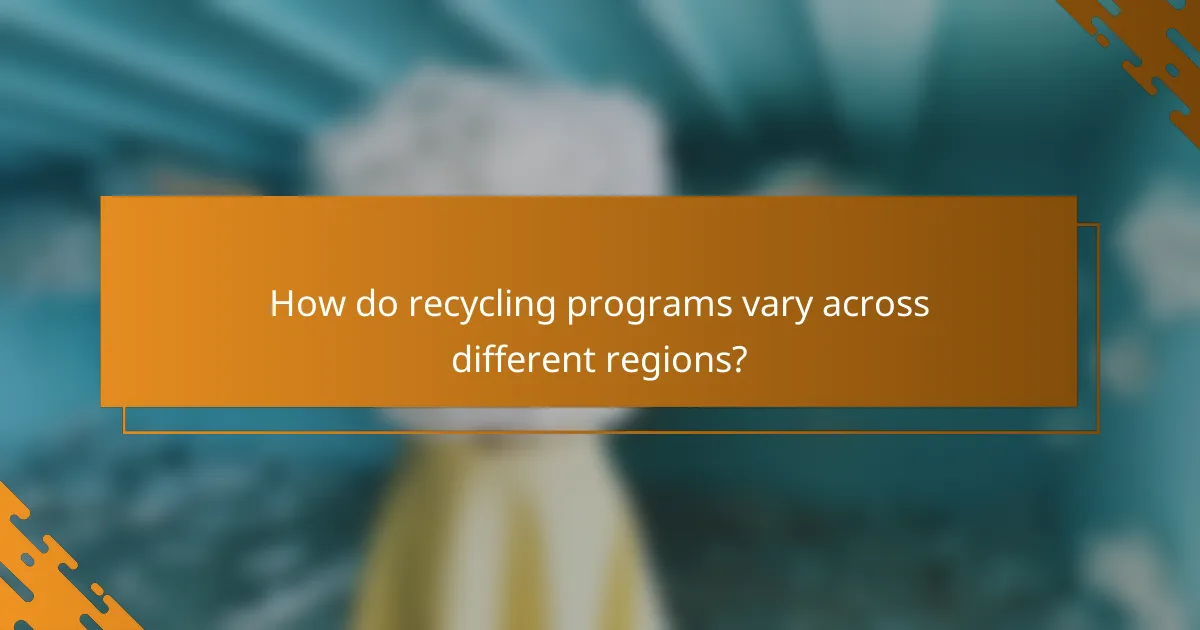
How do recycling programs vary across different regions?
Recycling programs differ significantly across regions due to local regulations, available resources, and community engagement. Factors such as population density, economic conditions, and environmental policies influence the effectiveness and participation rates of these programs.
Regulatory Differences
Regulatory frameworks for recycling can vary widely. Some regions have strict mandates that require residents to recycle certain materials, while others may only offer incentives. For example, countries in the European Union often have comprehensive recycling laws that set high targets for waste diversion, whereas some areas in the United States rely on voluntary participation.
Resource Availability
The availability of resources directly impacts the efficiency of recycling programs. Regions with well-funded waste management systems can provide more extensive services, such as curbside pickup and drop-off centers. In contrast, areas with limited budgets may struggle to offer even basic recycling services, leading to lower participation rates.
Community Engagement
Community involvement plays a crucial role in the success of recycling initiatives. Areas with active outreach programs, educational campaigns, and local events tend to see higher participation rates. For instance, neighborhoods that organize clean-up days or recycling competitions often foster a culture of sustainability, encouraging residents to engage more with recycling efforts.
Material Diversification
Different regions may accept various materials for recycling based on local processing capabilities. Some areas might recycle plastics and metals, while others include glass and paper. Understanding what materials can be recycled in your area is essential for maximizing participation and ensuring effective waste management.
